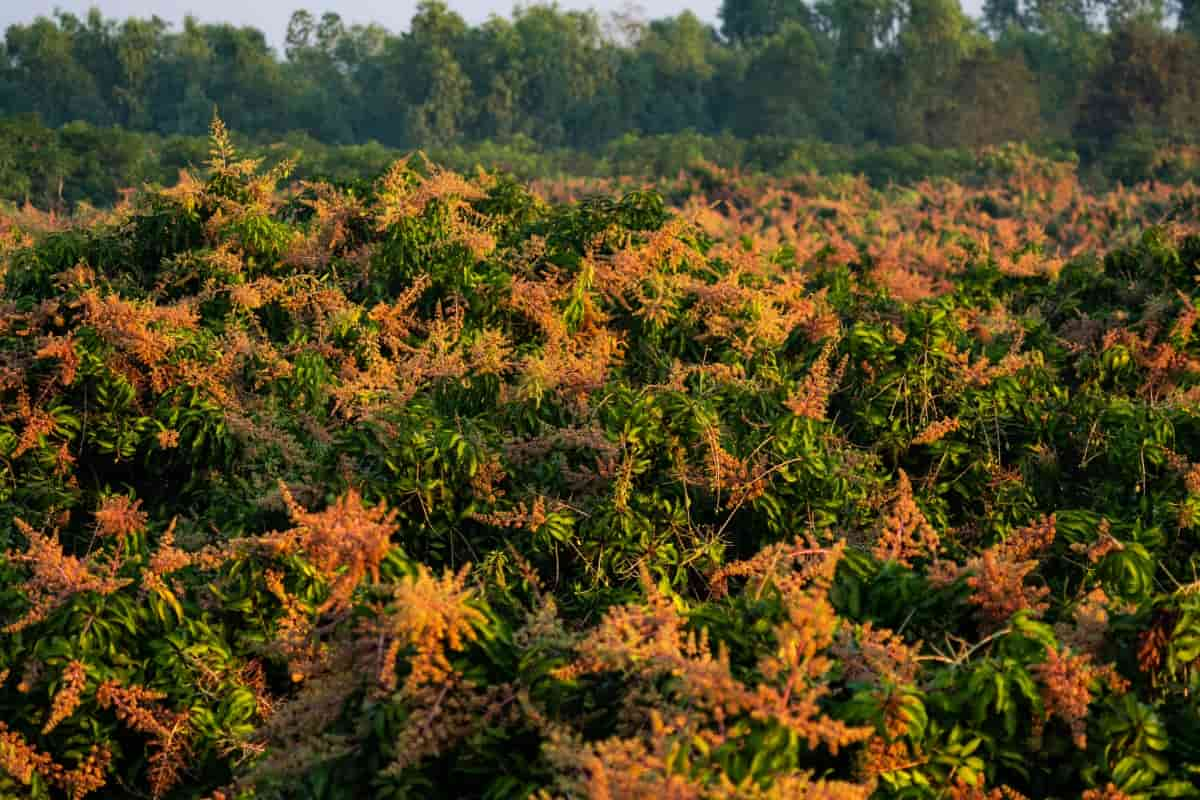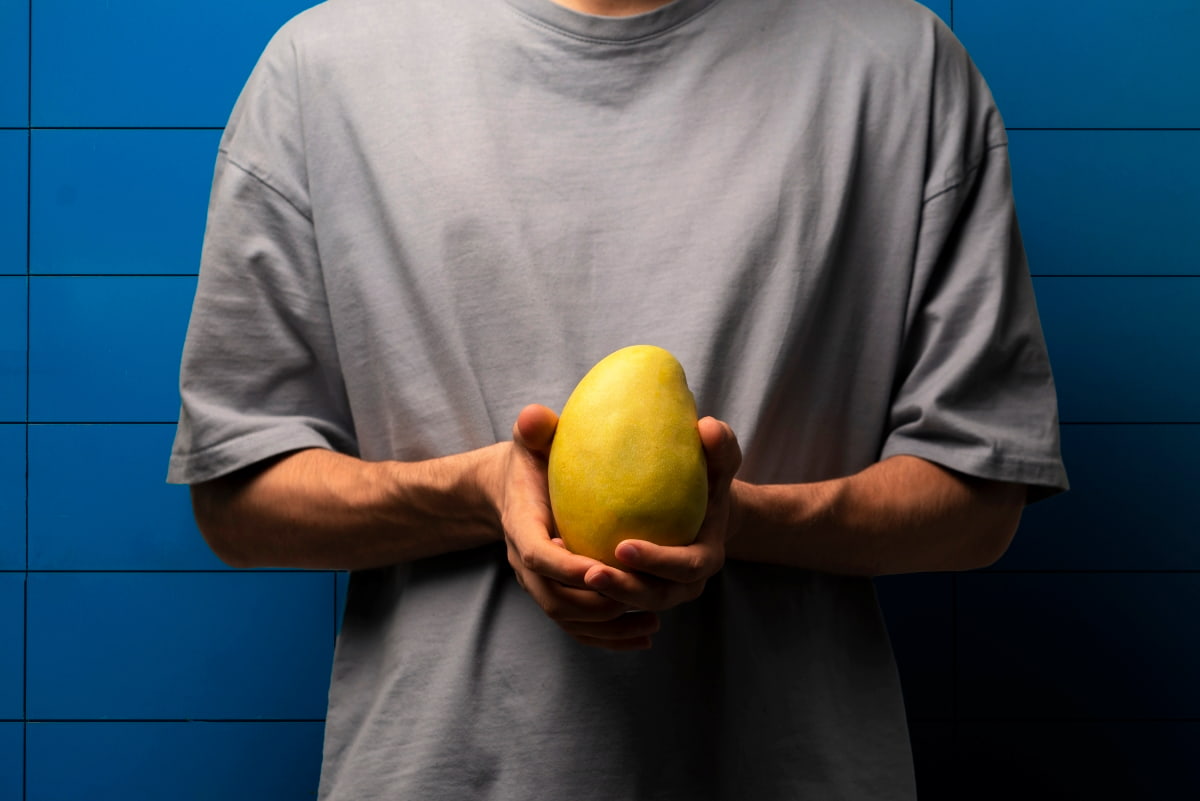Hi friends, you know that the Chausa mango farming is a popular agricultural practice focused on cultivating the Chausa variety of mangoes?. Chausa mangoes are known for their sweet and aromatic flavor, making them highly desirable in the market. Farming involves selecting suitable land, preparing the soil, planting Chausa mango trees, and providing proper care, including irrigation, fertilization, and pest control. Chausa mango farming offers potential economic benefits for farmers due to the high demand for this tasty mango variety.

Chausa Mango Farming
What is Chausa Mango Farming?
Chausa mango farming refers to cultivating and managing Chausa mango trees for commercial purposes. It involves selecting suitable land, preparing the soil, planting Chausa mango trees, and providing necessary care, including irrigation, fertilization, and pest control. The farming process aims to maximize the yield and quality of Chausa mangoes, renowned for their sweet flavor and aromatic characteristics. Chausa mango farming offers potential economic benefits for farmers due to the high demand for this particular mango variety.
Special Features
- Chausa mangoes are known for their sweet taste and golden-yellow color when ripe.
- They are nearly fiberless, adding to their appeal.
- Chausa mangoes have a pleasant aroma and a rich, sweet flavor.
- They are popular worldwide due to their unique taste.
- Chausa mangoes are commonly used to prepare mango chutney and mango pickles.
Pits Preparation
- Select suitable land with well-drained soil for Chausa mango cultivation.
- Dig pits with dimensions of around 1.2 meters in width and depth.
- Space the pits at least 10 to 12 meters apart.
- Remove any debris or rocks from the pits.
- Mix organic manure and compost with the soil while backfilling the pits.
- Ensure proper leveling of the pits before planting Chausa mango trees.
Plantation
- Selection of Healthy Saplings: To select healthy saplings for Chausa mango farming, obtain seeds from reputable sources or utilize grafting methods. Verify that the saplings are disease-free and exhibit vibrant, symmetrical leaves and buds.
- Plants Per Acre: Under the Ultra High-Density Plantation (UHDP) method, mango trees are planted at a spacing of 3×2 meters, allowing for a total of 674 plants per acre.
- Age of the Plant when Planted: In Chausa mango farming, the plants are typically planted when they are around 1 to 2 years old, ensuring they have developed a strong root system and are ready for transplantation.
- Support and Stacking of Plants: In Chausa mango farming, the plants are supported and stacked using bamboo or wooden poles to provide structural stability and prevent the breakage of branches under the weight of fruit and strong winds.
Drip Irrigation
Drip irrigation plays a crucial role in water management for Chausa mango farming. This involves delivering water directly to the root zone of the mango trees through a network of pipes and emitters. It helps conserve water by reducing evaporation and ensures efficient water distribution, preventing water wastage.
In case you missed it: Hapus/Alphonso Mango Farming: A Comprehensive Guide to Planting, Pruning, Care, and Harvest

Drip irrigation also promotes healthier root development, optimal nutrient absorption, and overall growth of the mango trees. Additionally, it allows for precise control over water application, enabling farmers to tailor irrigation schedules to the specific water needs of Chausa mango trees.
Compost/Fertilizers
Applying compost and fertilizers in Chausa mango farming involves several stages to support optimal tree growth and fruit production. Organic manure and compost are initially incorporated into the soil around the root zone during planting. After that, in subsequent stages, balanced fertilizers rich in nitrogen, phosphorus, and potassium are applied at regular intervals. This includes pre-blossom, post-blossom, and fruit development stages. Using compost and fertilizers ensures the availability of essential nutrients, promotes healthy tree growth, enhances flowering, and contributes to the quality and yield of Chausa mangoes.
Pruning Stages
Pruning for Chausa mango trees is typically done during the dormant season, after fruit harvest, and before new growth begins. The pruning stages include structural pruning in the early years, followed by regular maintenance pruning to remove dead, diseased, or crossing branches and to maintain the desired shape and size of the tree.
Flowering Stages
- Time of Flowering: Chausa mangoes typically flower between June and July, marking their flowering season.
- Factors Affecting Flowering: Mango flowering is influenced by environmental factors such as air temperature, water availability, and photoperiod, as well as plant-related factors, including nutritional status, photoassimilates, enzymatic activity, and plant hormones.
- Importance of Flowering: Flowering is of utmost significance in Chausa mangoes as it directly influences fruit production. Successful flowering ensures pollination and subsequent fruit set, leading to a bountiful harvest. Good and healthy flowering signifies the tree’s reproductive health and the potential for a high-quality and abundant yield.
- Pollination Techniques: Mango pollination has garnered significant attention, with studies focusing on insect-mediated cross-pollination, self-pollination, pollen morphology, physiology, in vitro germination, outcrossing, and the impact of environmental factors on pollination.
Pests and Diseases
Chausa mangoes are susceptible to various pests and diseases. Common problems include mango hoppers, fruit flies, mealybugs, and aphids. These can be managed through regular monitoring, cultural practices, and application of appropriate insecticides. Diseases affecting Chausa mangoes include anthracnose, powdery mildew, and fruit rot. Proper sanitation, pruning, and fungicide treatments are essential for disease management. Additionally, maintaining adequate spacing between trees, promoting good airflow, and avoiding saturated conditions can help prevent disease outbreaks in Chausa mango farming.
Harvesting Time and Yield
Chausa mangoes are typically harvested during June and July. The yield of Chausa mangoes can vary but is generally considered high, with an average yield ranging from 200 to 300 kilograms per tree.
In case you missed it: Badami Mango Farming: A Comprehensive Guide to Planting, Pruning, Care, and Harvest

Conclusion
Chausa mango farming offers a rewarding opportunity for growers due to the exceptional taste, aroma, and popularity of Chausa mangoes. With proper land selection, pit preparation, water management, fertilization, pruning, and pest control, farmers can cultivate healthy trees and achieve a high yield. The delicious and fiberless fruit and its potential economic benefits make Chausa mango farming a lucrative venture for those seeking success in the mango industry.
- Feed Your Flock for Less: Top 10 Tips to Save on Chicken Feed
- Ultimate Guide to Ossabaw Island Hog: Breeding, Raising, Diet, and Care
- Hatching Answers: The Top 10 Reasons Your Chickens Aren’t Laying Eggs
- Eggs and Economics: Breaking Down the Cost of Raising Backyard Chickens
- Defend Your Greens: Proven Methods to Keep Iguanas Out of Your Garden
- Ultimate Guide to Cinnamon Queen Chicken: A Comprehensive Guide for Beginners
- Ultimate Guide to California Tan Chicken: Breeding, Raising, Diet, Egg-Production and Care
- Ultimate Guide to Marsh Daisy Chicken: Breeding, Raising, Diet, and Care
- 10 Types of Chicken Farming Businesses You Can Start for Profits